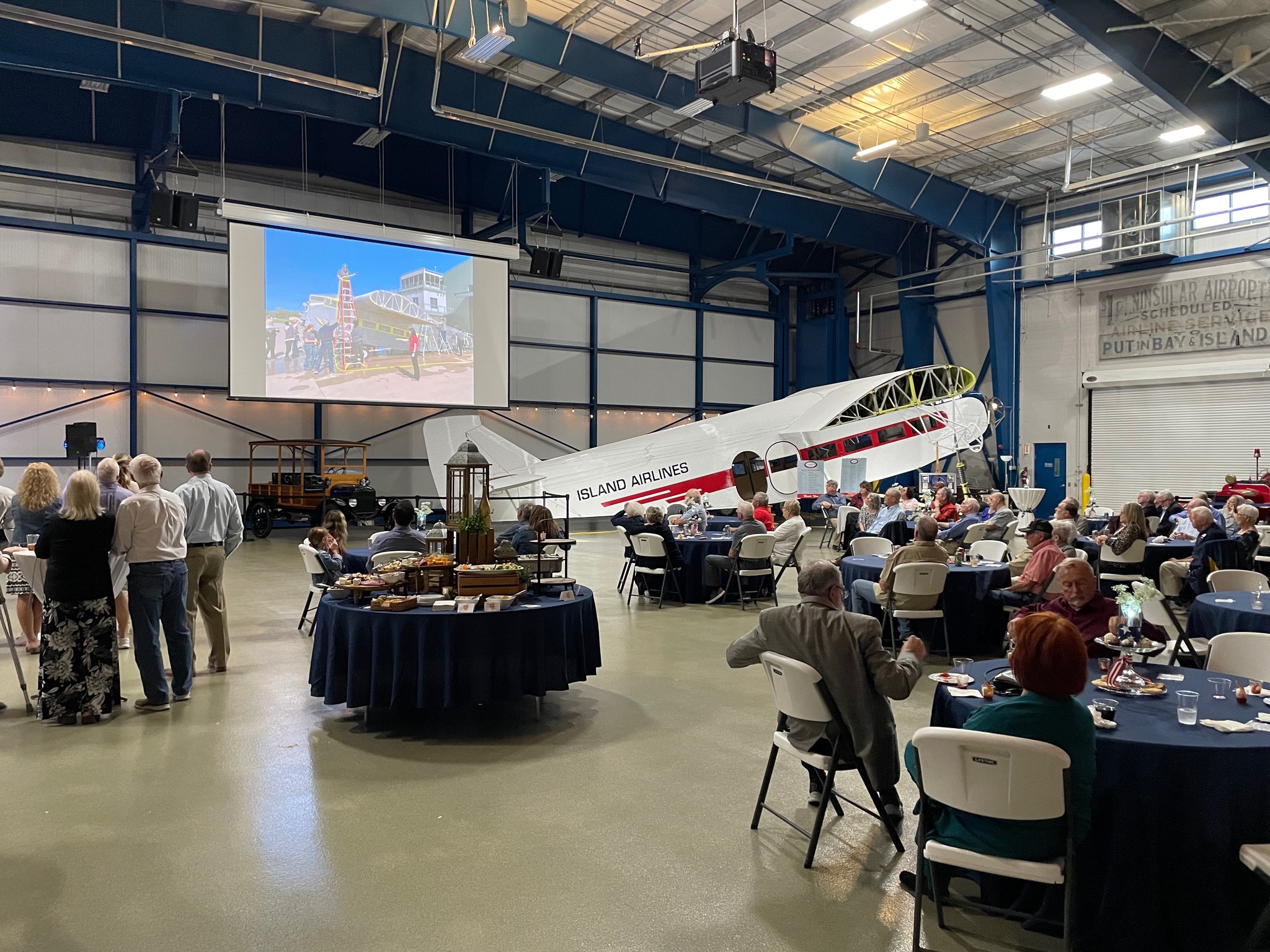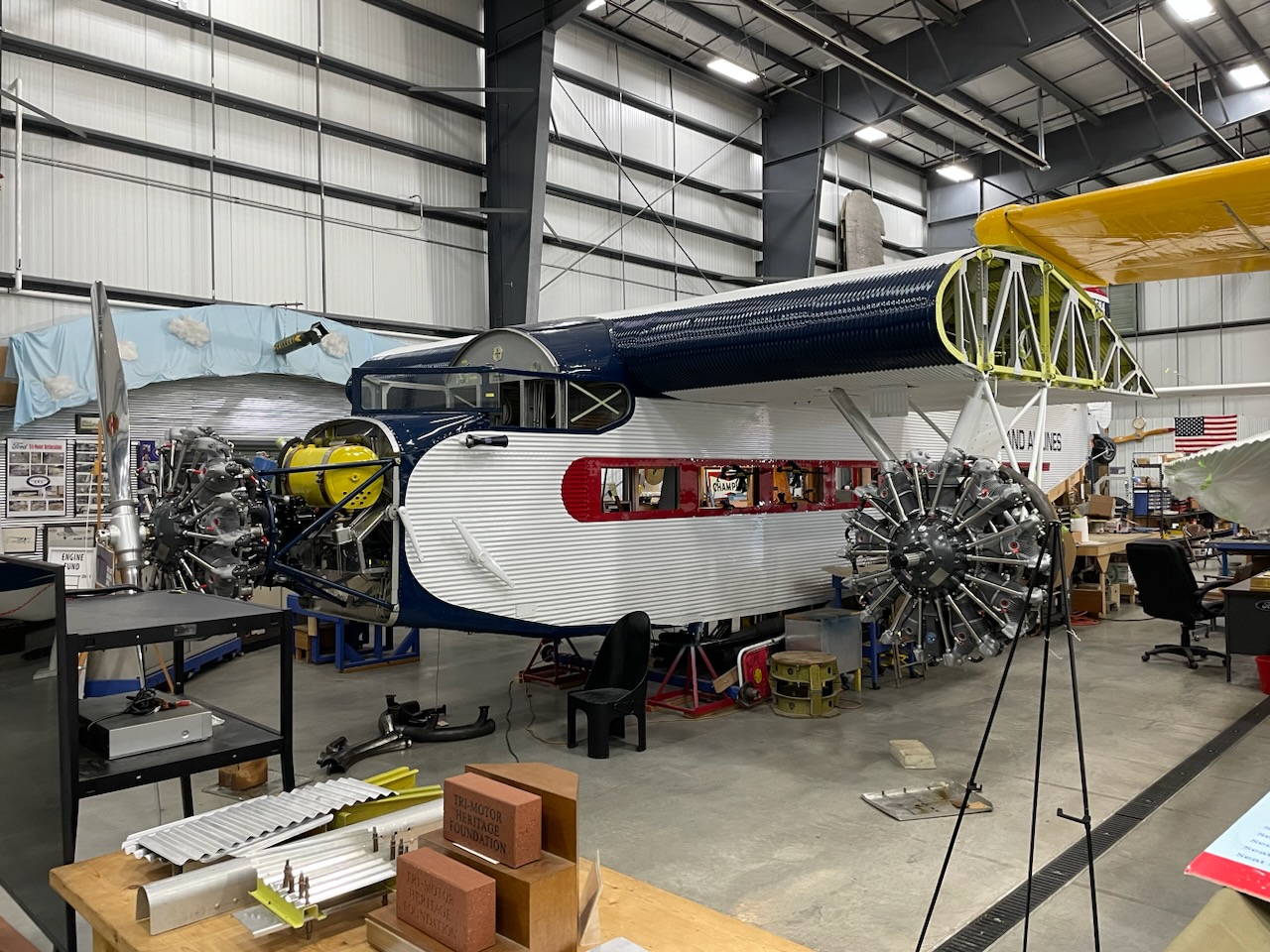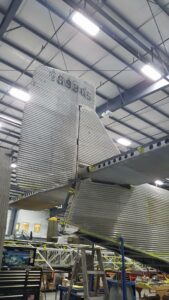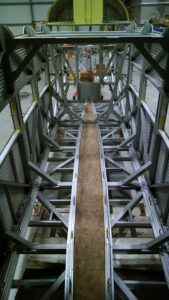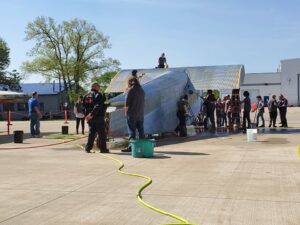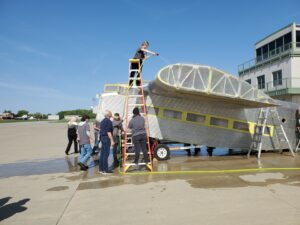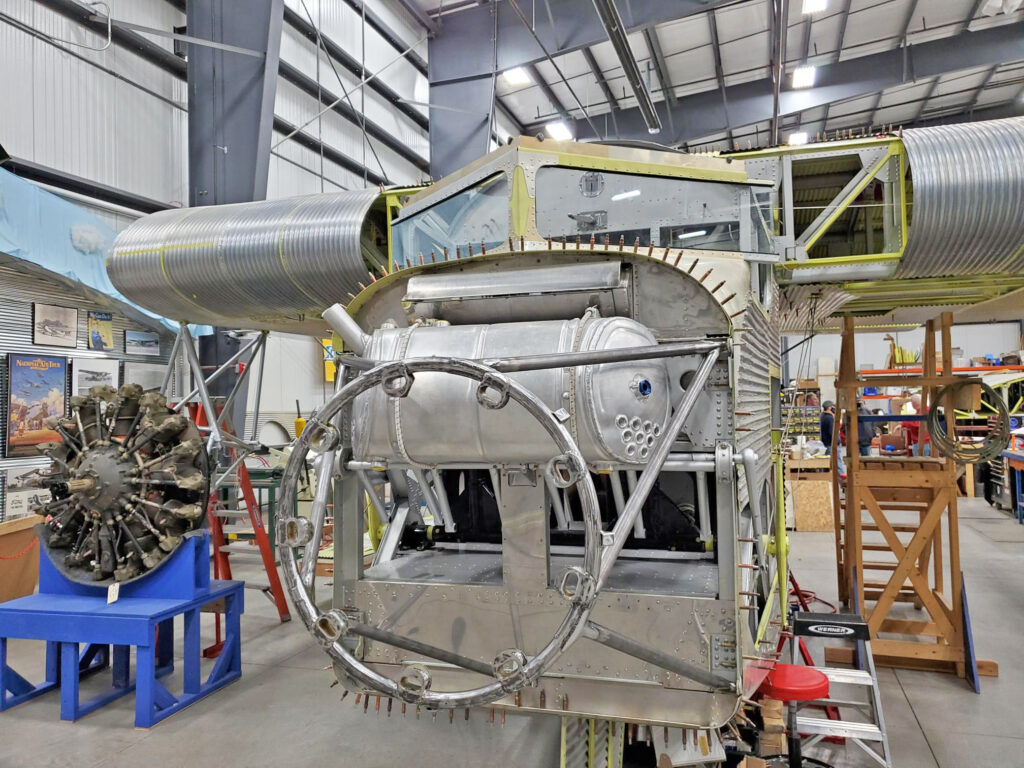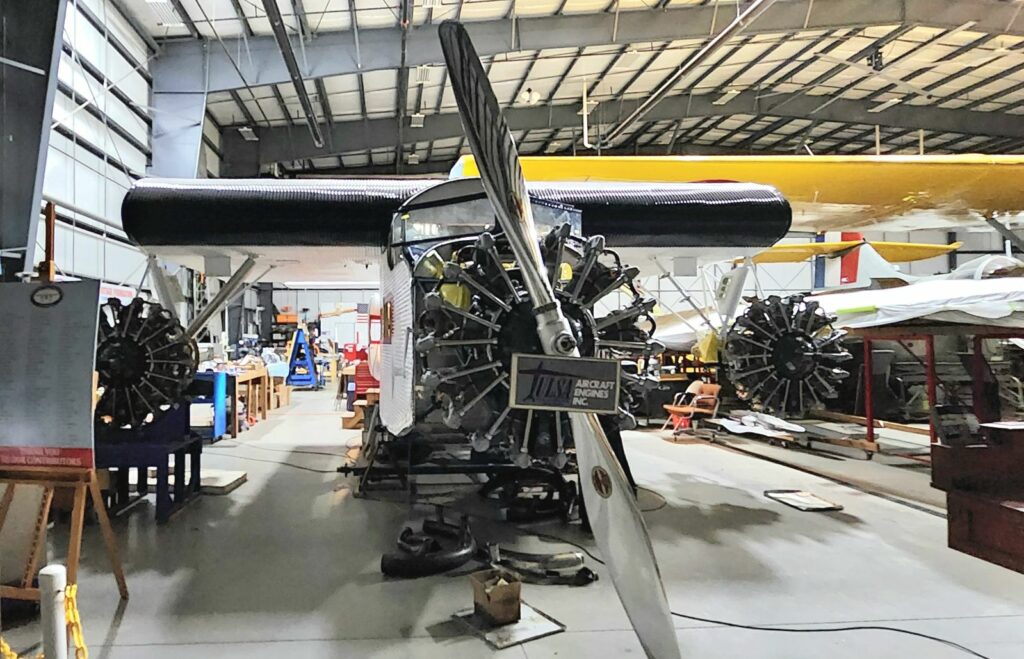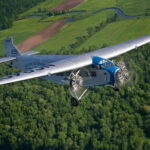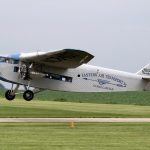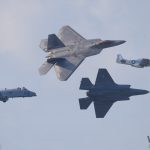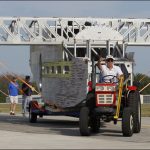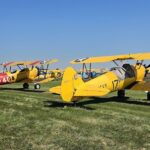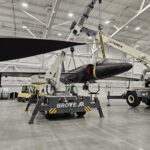Not many museums are able to say that they have an airworthy example of a Ford Trimotor, but the Liberty Aviation Museum of Port Clinton, Ohio, will soon be able to have TWO airworthy examples of the Tin Goose. Currently, the museum sells rides on Ford 5-AT-B NC9645, which historically flew for Transcontinental Air Transport (T-A-T) as the “City of Wichita” and now flies as “City of Wichita/City of Port Clinton”, but the second Trimotor, NC9684 will pay homage to an airline that was an inextricable link in Port Clinton but among the nearby Bass Islands in Lake Erie.
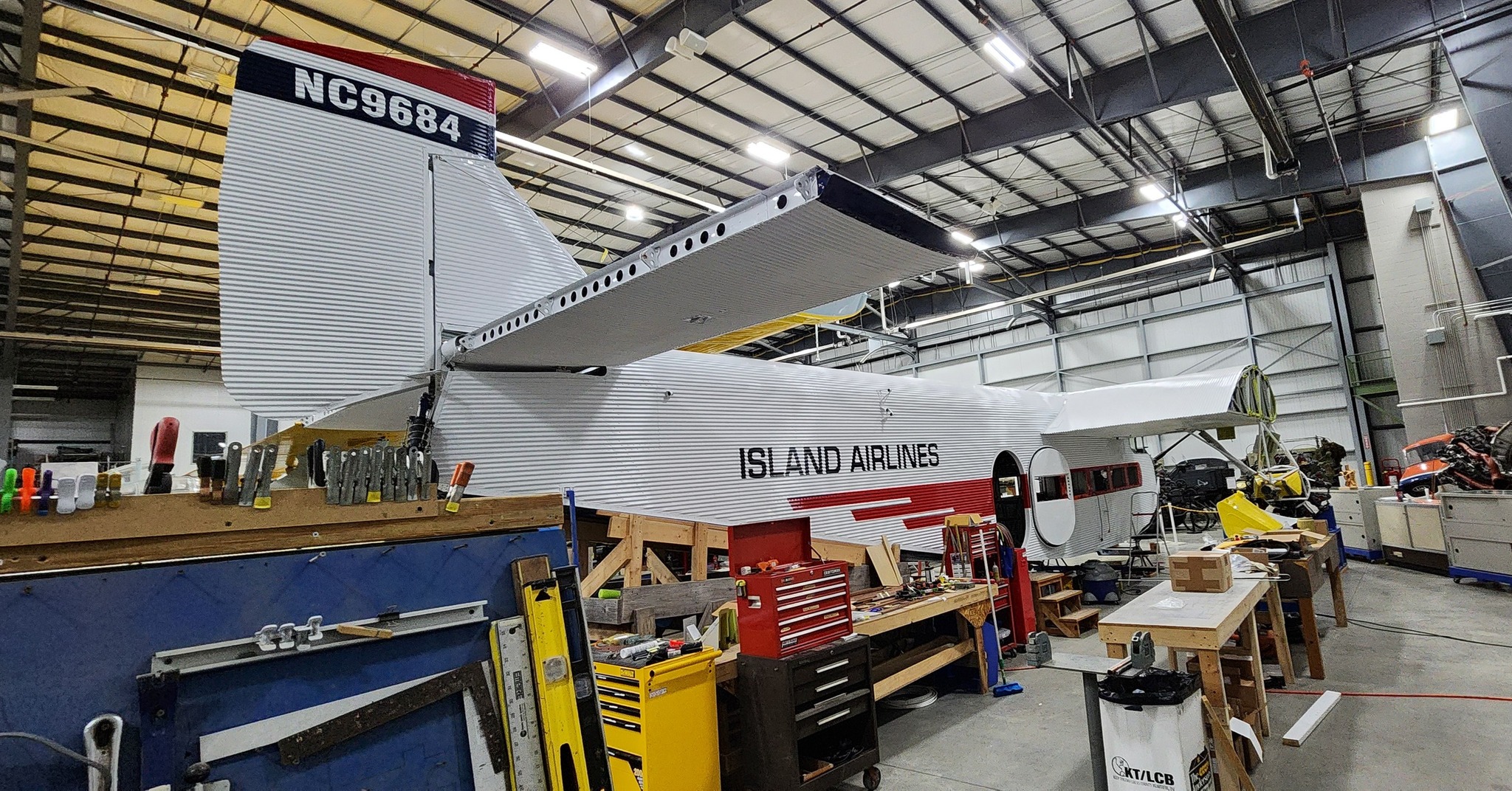
Like many of the surviving Ford Trimotors, NC9684 (construction number 40) has had a colorful past up to this point. Built in Dearborn, Michigan, c/n 40 made its first flight on April 9, 1929, and was just one serial number removed from the Ford Trimotor that would wind up in the National Air and Space Museum. On May 1, 1929 c/n 40 was delivered to Compañía Mexicana de Aviación, flying with the Mexican registration X-ABCF (later changed to XA-BCF). At the time, the majority of Mexicana de Aviación’s shares were owned by Juan Trippe and Pan American Airways, with Pan American owning Mexicana’s routes from Brownsville, Texas to Mexico City. XA-BCF would later be bought outright by Pan American on November 1, 1936, primarily flying the short route from Key West, Florida to Havana, Cuba with its original American registration NC9684. It would be more involved in Cuban aviation when on June 15, 1938, it was sold to Cubana de Aviación, S.A., which is today the flag carrier of Cuba. Much like Mexicana de Aviación, Cubana was then largely owned by Pan Am with the massive American carrier gradually loosening its hold over Cubana during the course of World War II, all while c/n 40, registered in Cuba as NM-24, flew out the war years in the tropical skies of Cuba. In July 1946, NM-24 was acquired by Milton “Milt” Hershberger, a former barnstormer who had established Island Air Service (later known as Island Airlines) to serve the people of Ohio’s Bass Islands, a popular summer tourist destination for Ohioans that were often iced in during the harsh winter months.
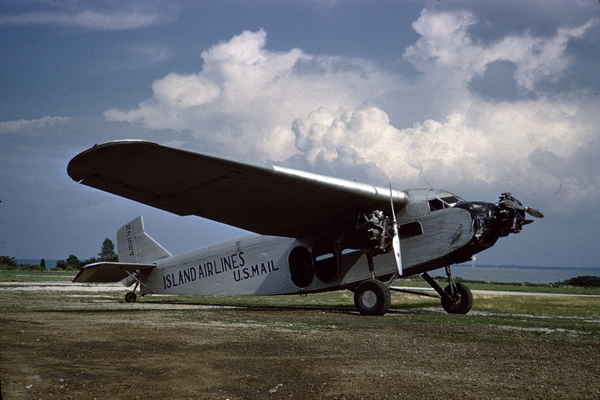
During his short but regular flights in his fleet of Tri-Motors, Hershberger would fly passengers consisting of both locals and tourists, carried the mail, and flew all types of cargo from groceries, liquor, fuel, and even oversized items from pianos to Christmas trees. The Trimotors also became the main transportation between the islands and the mainland, with school children flying the Trimotors to and from school, and residents flying back and forth to work and home. Milt’s base of operations was at Put-In-Bay Airport on South Bass Island, and he would make up to two stops a day at Middle Bass Island, North Bass Island, Kelleys Island, Rattlesnake Island, and on the mainland at Port Clinton at what is now Erie-Ottawa International Airport. The 17 mile round trip made 12 takeoffs and landings and lasted on average 45 minutes, with the Trimotors pushing leisurely speeds of 85 mph. Now registered as N69905, the aircraft was one of four Trimotors that comprised the Island Air Service fleet during the late 40s and early 50s, which were maintained by Hershberger, who in 1938 had bought the entirety of Ford’s remaining stock of Trimotor parts to maintain his fleet for years to come, and after Hershberger’s ownership of the company ended, the rebranded Island Airlines, which was often dubbed The World’s Shortest Airline, continued its regular operations in its red, white, and blue Trimotors well into the 1970s.
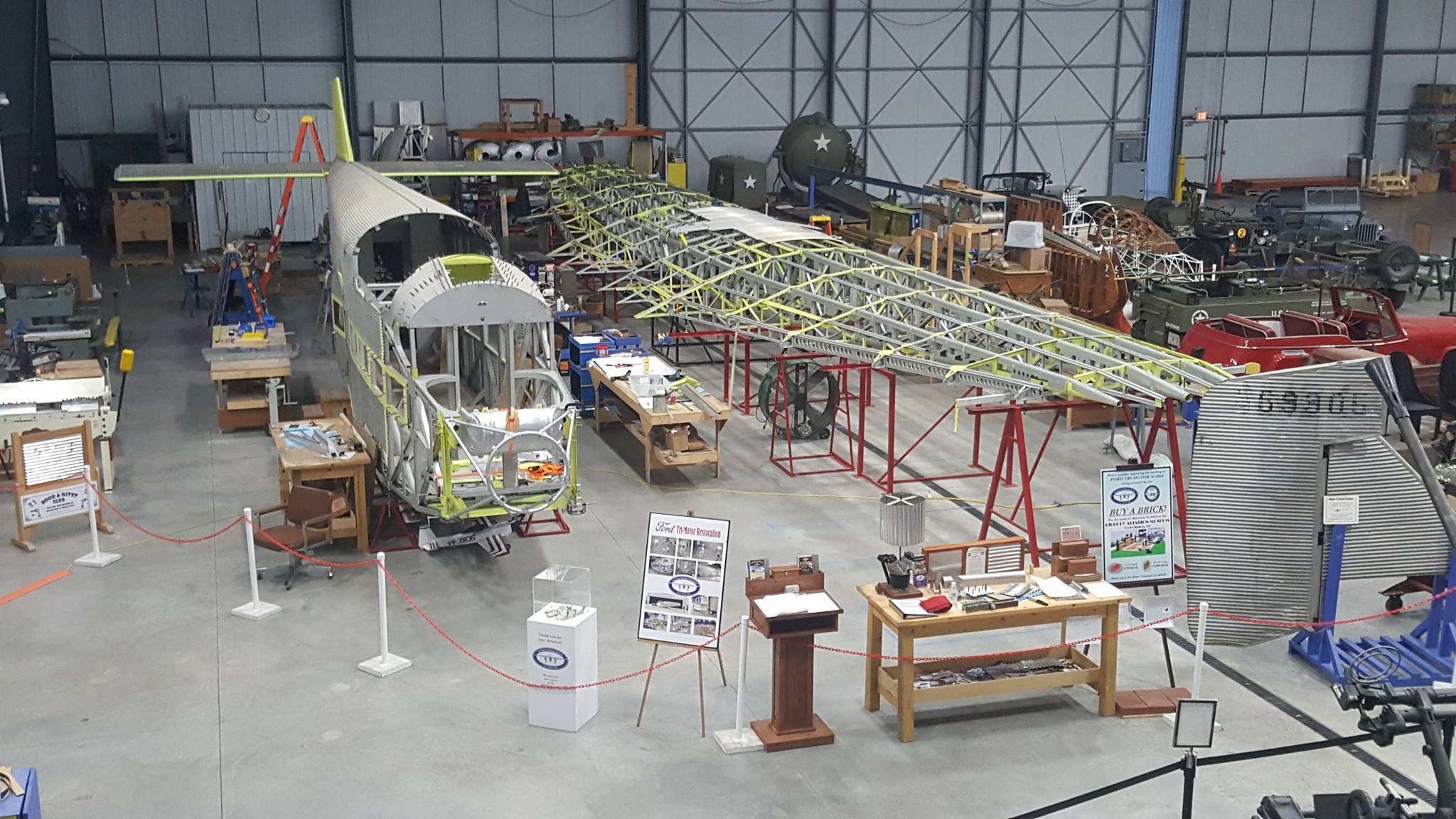
But in 1952, Milt sold N69905 to Charles “Frenny” Frensdorf of Orofino, Idaho. Up in the upper Rockies, the old Tin Goose was used for an entirely different utilitarian purpose; fighting forest fires with smokejumpers jumping from its old doorway. By this point, N69905 had also been heavily modified with non-stock parts, from the installation of a new set of Wright R-975 Whirlwind radials to oleo struts from a P-47, and wheels from a Lockheed Lodestar among other changes. Frenny wouldn’t keep N69905 for long, as he sold it to Harold Johnson of Johnson Flying Service in Missoula, Montana, one of the more prominent postwar operators of Ford Trimotors. But in just over two weeks time, N69905’s flying career came to an abrupt end.

The last flight of N69905 was recounted in the July 2009 issue of The National Smokejumper Association’s quarterly magazine Smokejumper by Bob Graham, one of the eight men who survived the accident that wrote off this Ford, saying “…on August 17, 1953, six of us were dispatched to three fires in the Bob Marshall Wilderness. Included in this load were: spotter Dick Conklin, and jumpers Dave Owen, Torky Chorbajian, Donald Kerr, Fritz Wolfrum and Frank Wolfe.
“We took off from Hale Field early [in the] afternoon in the Ford Trimotor N69905. This particular Ford was purchased by Johnson Flying Service just a couple weeks earlier on August 1, 1953, from Frenny Frensdorf of Orofino, Idaho. Upon arriving over the fires, [we] found that it was too windy to jump, so we landed at the Spotted Bear R.S. strip to wait and try to jump later in the day. Around suppertime we took off to try to jump the fires before dark. As we began to gain altitude, one of the engines quit. But one of the reasons we liked the Ford was that it had three engines. But shortly after the first engine quit, a second died. We were all suited up, and I was the closest to the door and immediately looked out to the rapidly-closing ground. It was questionable in my mind as to whether there was enough altitude to jump, so I looked up to the cabin at the spotter, Dick Conklin. Conklin saw what I was considering and, shaking his head, pointed to me to return to the cabin floor. As I did that, the third engine quit and we crashed. Kenny Roth was the pilot and fought the plane all the way to the ground, hitting tail first. I was knocked unconscious and must have been out awhile as when I did come to, there was no one else around. I had been buried by all the fire gear and must have been completely covered because everyone else had already gone past me and left the plane. Remember, I was closest to the door. I freed myself and scooted down the floor to the door and got halfway out when I heard voices hollering at me to get up and run and that the plane was about to blow up. Being extremely well educated, I thought that would be a good idea and wondered why I was not doing exactly that. Then I noticed that my left leg and ankle were broken and hollered back that I could not walk, let alone run.
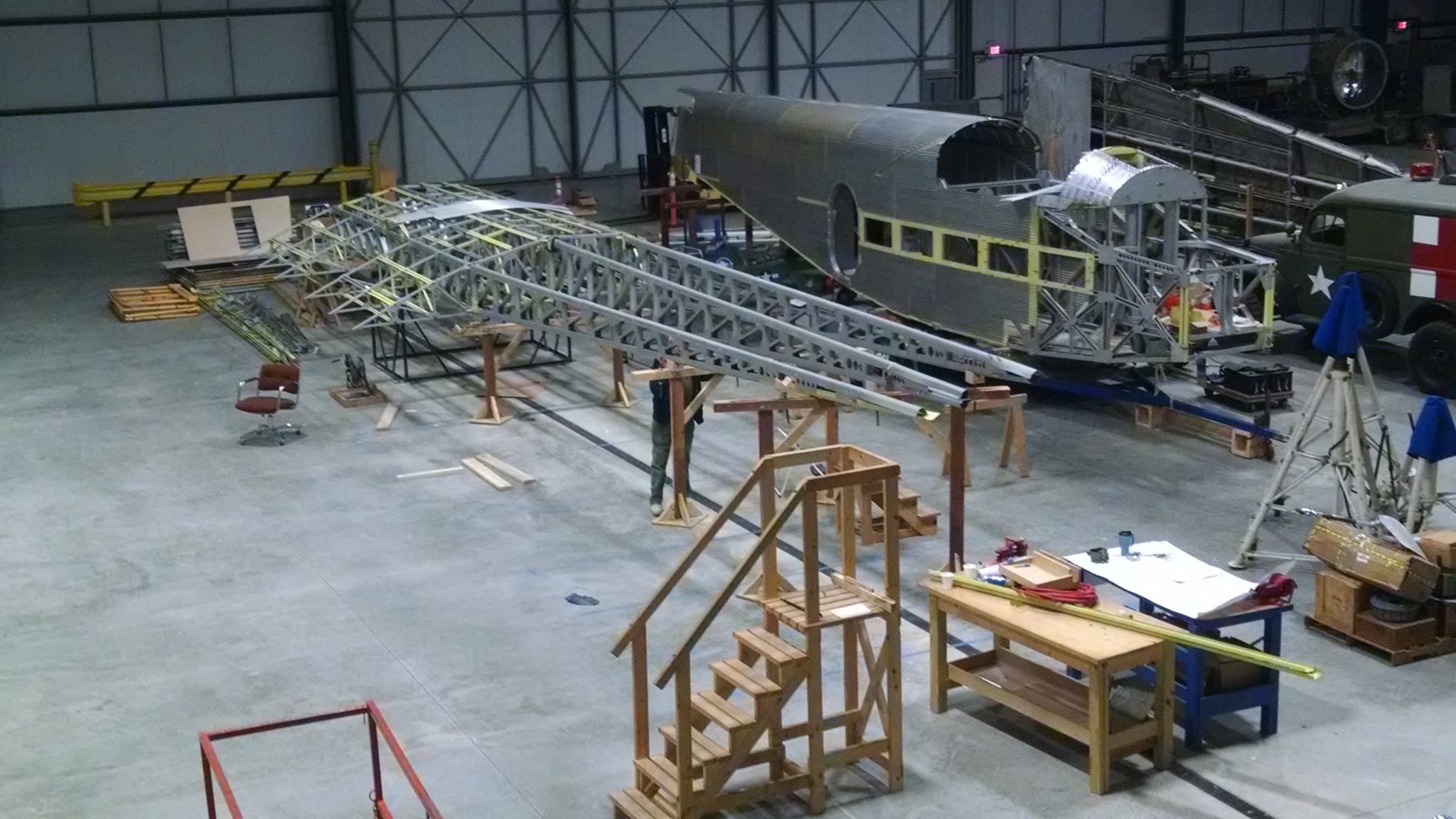
“My brave brethren, who all had to crawl over me to exit the plane, now abandoned all caution and began to administer to my immediate needs. This consisted of tearing the sleeve off my new work shirt and administering Demerol. They also began to figure out how to cut off my White boot. I vetoed that move and succeeded in convincing them that it would be fine to unlace the boot and pull it off. That Demerol really worked. Kenny Roth had broken his instep and almost all the jumpers had some injury including a broken arm, broken ribs and other miscellaneous sores. Kenny and I were stretchered back to Spotted Bear, and that night Fred Brauer and Bob Johnson came into the strip with Johnson’s Twin Beech to fly us out to Missoula. I believe Jack Hughes, Bob Johnson’s son-in-law, piloted the Twin Beech. Brauer and one of the jumper foremen were suited up and prepared to jump into the crash site in the dark, if that became necessary. As we began to take off, the stretchers were sliding around quite a bit on the floor, so Bob Johnson held Kenny down and Fred held me down. There were moose on the landing field and the Beech was scooting around trying to herd the moose away. Finally Bob Johnson hollered up to the pilot to quit fooling around and take off.”
While no one onboard Nine Zero Five was killed, the 24-year old Ford was deemed too costly to repair, and after it was stripped for any useful parts, was left where it fell in the Flathead Forest until Maurice Hovious, known to many as the “godfather of the Ford Trimotor”, recovered the wreck around 1984 and brought it to his workshop in Vicksburg, Michigan, where Maurice and his wife Judy have restored other Trimotors at his business, Hov-Aire, Inc., but the damage sustained in the crash and the subsequent decades of exposure would need time to rectify, time which with Hovious had to prioritize other aircraft, including other Fords.
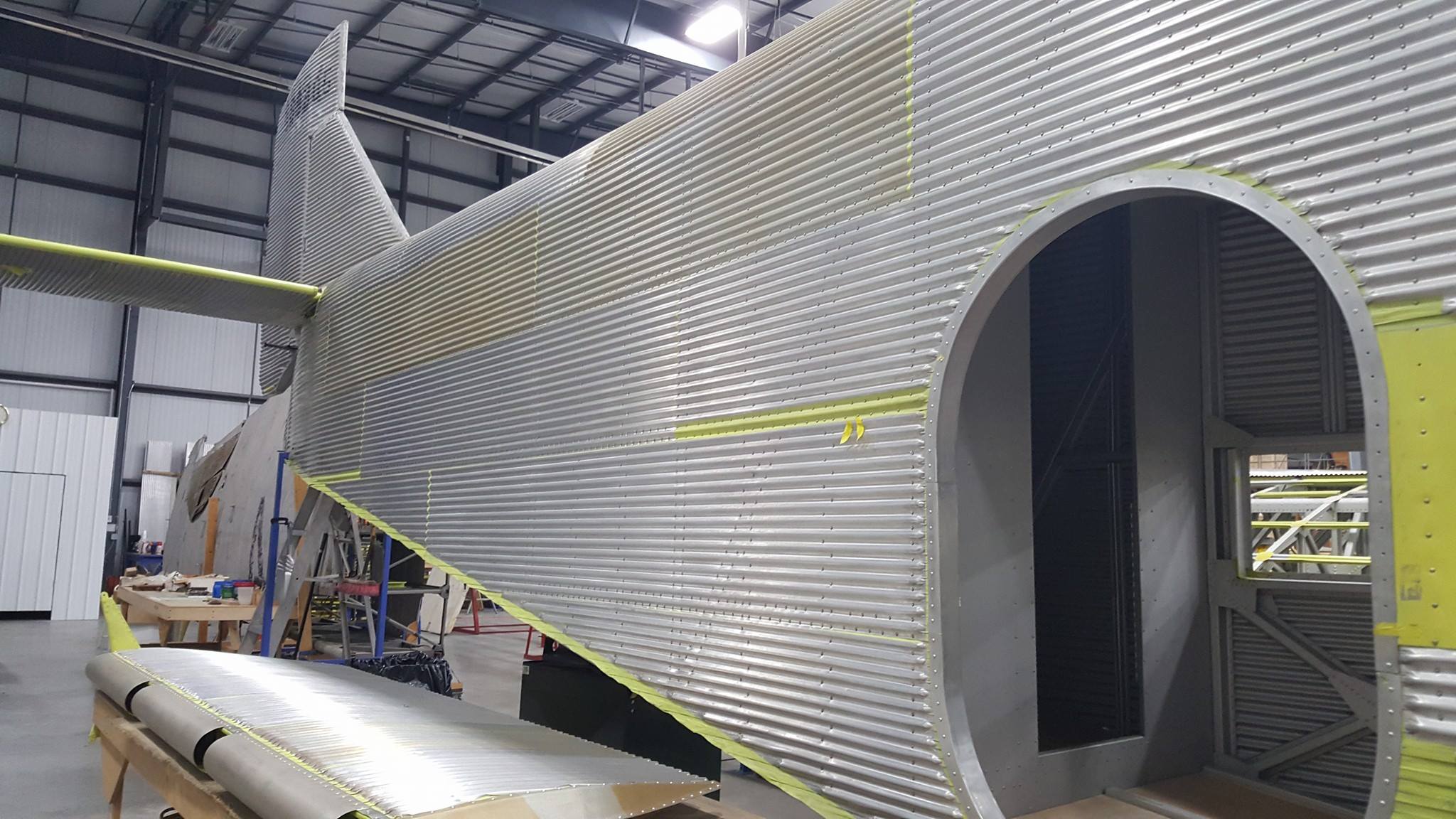
While the aircraft sat in Hovious’ shop, the Liberty Aviation Museum was established at Port Clinton’s Erie-Ottawa International Airport, opening to the public on December 7, 1991 with the intent on showcasing Word War II aircraft. But in 1994, the same year the museum put on a well-received airshow at Port Clinton, museum officials began searching for a Ford Trimotor to bring back to Port Clinton to commemorate the role the old corrugated metal airplanes played in the local community. This would soon lead to the museum establishing contact with Maurice Hovious, who was excited to have a Ford permanently based out of the Port Clinton area.
A couple years later, Ken Benjamin, a local pilot serving as President of the Erie-Ottawa Regional Airport Authority who was keenly interested in the history of the Island Airlines Ford Trimotors, and a member of EAA Chapter 1247, invited Maurice Hovious to deliver a presentation on his latest project, an Island Airlines Ford Trimotor, N7584, which to this day he is restoring for Kermit Weeks after the aircraft was critically damaged during Hurricane Andrew in 1992. The presentation was well attended, and Ken mentioned to Maurice his desire for a Ford Trimotor to be rebuilt for static display at Erie-Ottawa International Airport in Port Clinton, a stop on the old Island Airlines route. At the time, Ken thought that a flying Trimotor at Port Clinton would be out of reach for them, but not long after the presentation, Hovious invited Benjamin and several others to his workshop in Vicksburg to have a look at his Trimotor projects. It was during the shop tour that Hovious made a generous offer; in exchange for the labor from the volunteers of EAA 1247, he would provide the expertise and materials needed to build a Trimotor. Benjamin gladly accepted this generous offer, and in 2004, the first pieces of the remains of 5-AT-B N69905 arrived at Port Clinton. Maurice also insisted that the aircraft be restored to flying condition, and with his continual support, the work of rebuilding the aircraft began, and the Tri-Motor Heritage Foundation would be established to provide support for the project.
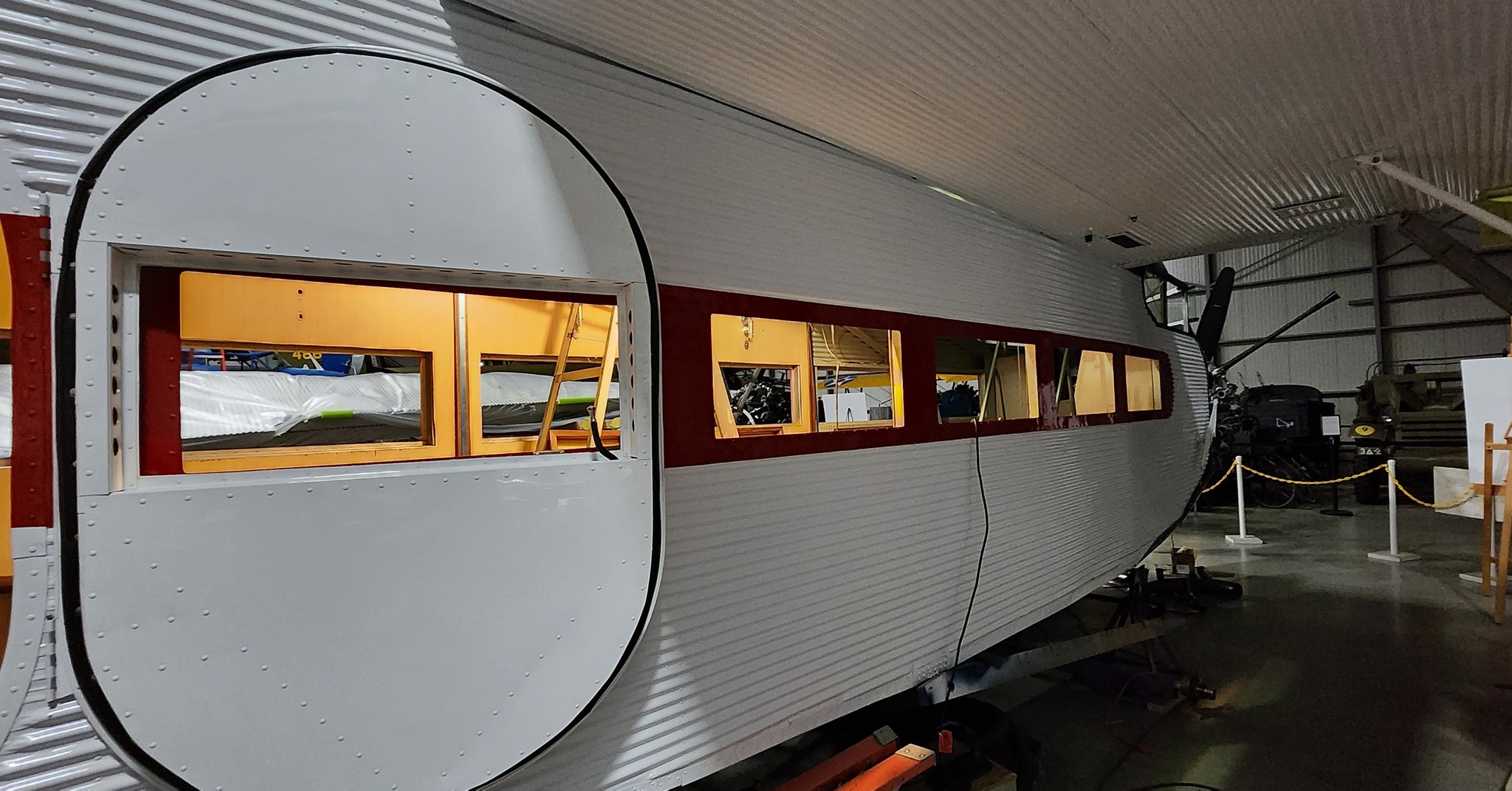
Over the past 22 years, the Trimotor has steadily been taking shape in Port Clinton. While at one point the aircraft was to fly with the registration N421YA, its original American registration of N9684 has been restored. One reason for the length of time of this project has been the fact that when the aircraft was brought to Port Clinton, it was found that much of the original structure was unfit to be placed back on the flying aircraft, so panel by panel, beam by beam, and rivet by rivet has had to be replicated in every minute detail, using the original parts as reference material.
In 2012, Ed Patrick, CEO of the Liberty Aviation Museum, offered to move the Trimotor project into a newly-built hangar for the museum, and the project has carried on here with the full support of the Liberty Aviation Museum ever since (it was also around this time that we wrote a short article on the aircraft). In 2014, the museum acquired another Trimotor in the form of 5-AT-B NC9645 (c/n 8) from the Evergreen Aviation and Space Museum in McMinnville, Oregon. Being placed back in the air with its original Transcontinental-Air-Transport (T-A-T) markings, the aircraft flies with both its historic name “City of Wichita” and the name “City of Port Clinton”, and has also been leased to the EAA when its own Ford, NC8407, needed to be worked on or to provide tours outside of NC8407’s itinerary. Selling flights in the City of Wichita/City of Port Clinton has also gone to benefit the restoration of NC9684, which is being restored in Island Airlines’ iconic red, white and blue colors. So far, Jody Brausch of the Tri-Motor Heritage Foundation has stated that the team is midway through the project. The wing’s section has been refitted to the fuselage, which has been recently repainted, all three engines are on their mounts, the oil coolers have been reinstalled and the lines and tanks have been successfully checked to see if they are airtight. Meanwhile, control cables for the throttles, carburetor heaters and mixture controls are being fitted, and the cowlings for the No. 1 (left) and No. 3 (right) engines are being made. By mid September, the team hopes to have the wings completely painted, and to have the outer panels and the landing gear put back on the airplane by New Year’s. With any luck, it is hoped to have NC9684 return to the skies by next summer.
When it makes its first flight in over 70 years, NC9684 will stand alongside NC9645 as one of two airworthy Fords based out of Port Clinton, with ‘684 set to offer round-trip rides from Port Clinton over the Bass Islands (albeit without making stops on the islands). The aircraft will be cleared to take passengers up under the rules of an FAA guideline called Part 91, which will restrict these flights to a 25 mile radius, well beyond the 17 mile range covered by the old Island Airlines Fords, but Part 91 also states that the aircraft must land at the same departure airport (in this case Erie-Ottawa). But Jody Brausch states that making these flights at all will honor the legacy of Island Airlines and the lives it touched, with many locals having formed loving memories of flying on the old Trimotors between the islands and the mainland across Lake Erie, and soon, many more people will make similar memories looking out the windows of NC9684.
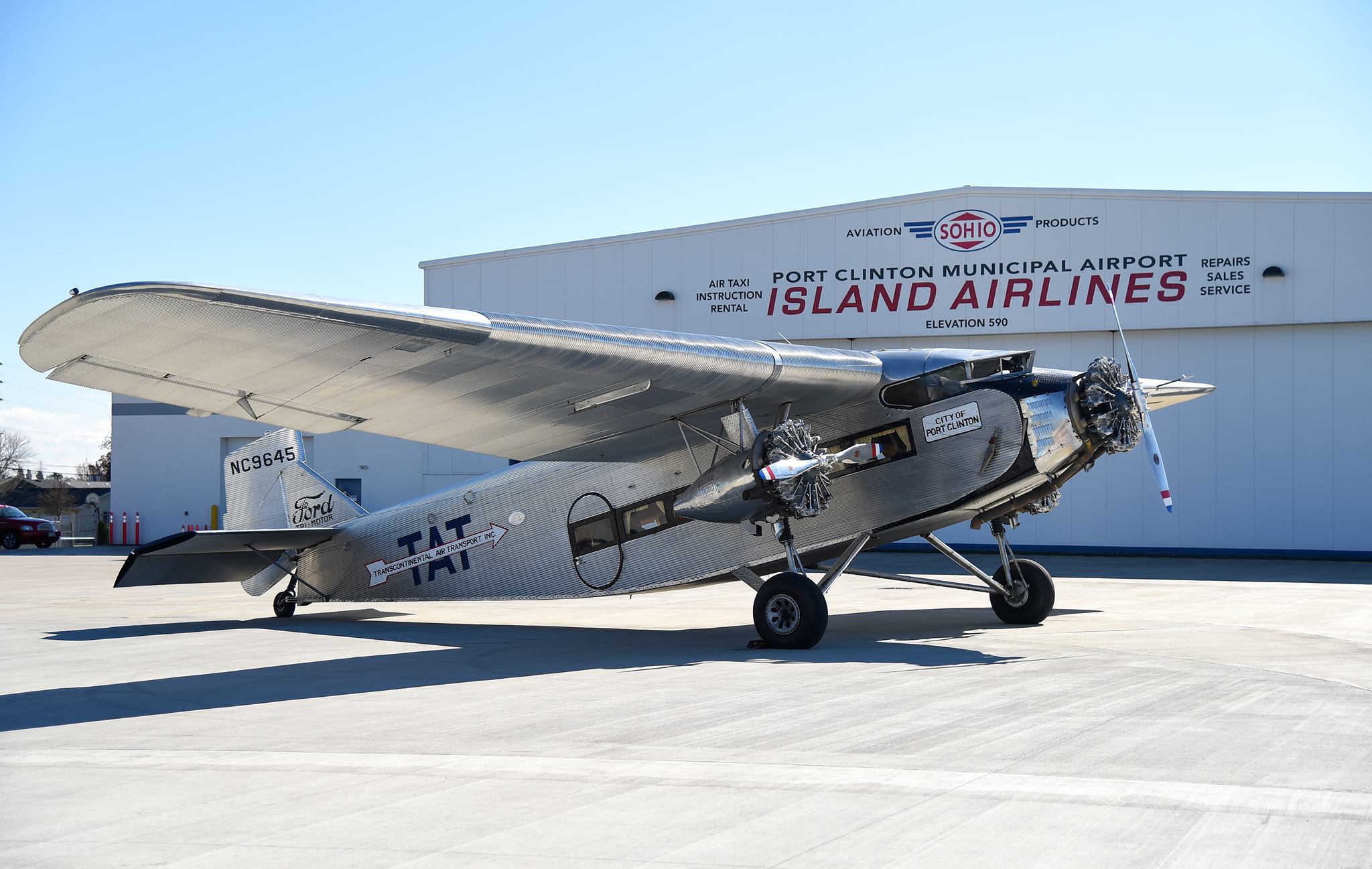
Special thanks to Jody Brausch for his contributions to this article. If you would like to support the restoration of the Ford Trimotor, visit the Tri-Motor Heritage Foundation at About Us | (restoretheford.org), the Liberty Aviation Museum at Liberty Aviation Museum, and EAA “Tin Goose” Chapter 1247 at Welcome to Tin Goose Chapter 1247 of the Experimental Aircraft Association (tingoose1247.org).
The Ohio Story: Lifeline of the Islands | Hagley Digital Archives
Restoring history: Foundation works to bring back a Ford Tri-Motor (thehelmsandusky.com)
